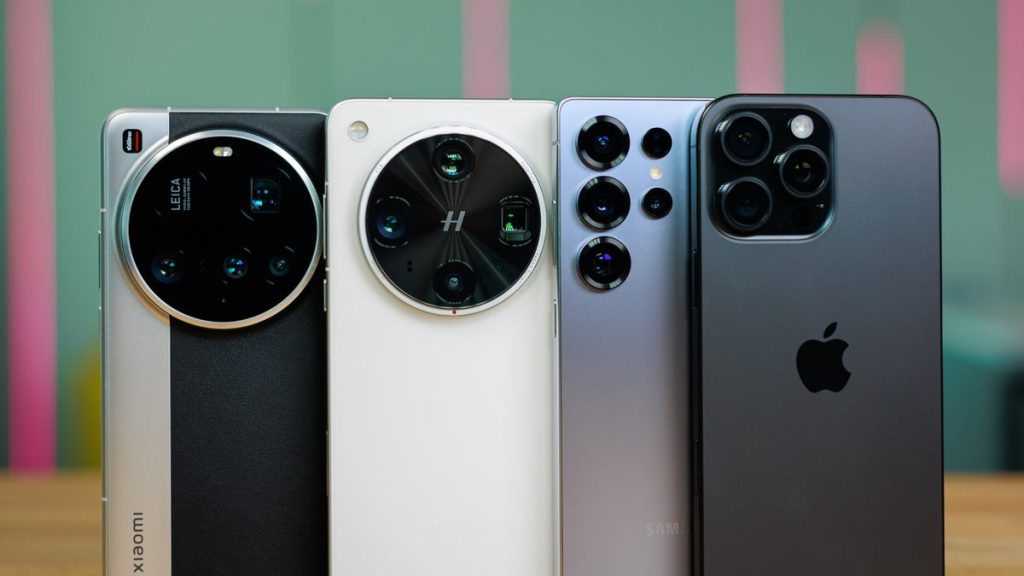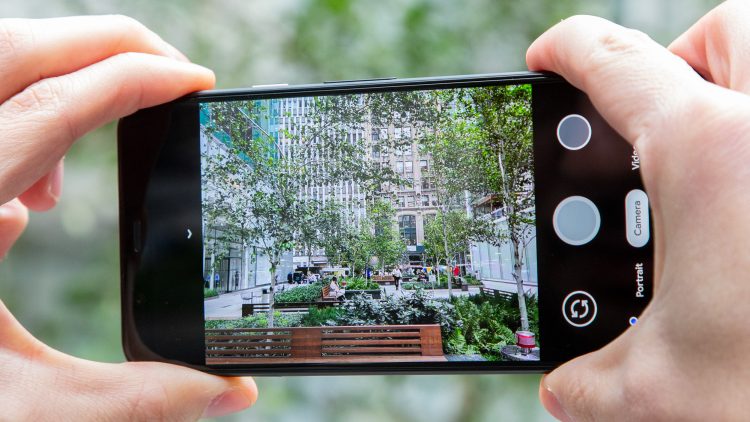Introduction: The Power of Camera Technology in Modern Smartphones
In today’s smartphone market, camera performance is often one of the most critical factors influencing purchasing decisions. As mobile photography continues to replace traditional cameras for many users, the demand for high-quality camera systems with cutting-edge features has grown exponentially. Whether you’re a casual user looking to capture everyday moments, a content creator sharing high-definition videos, or a professional photographer in need of a compact tool for capturing stunning images, choosing the right smartphone camera is crucial.
With the advancement of image processing technology, artificial intelligence (AI), and multi-lens systems, smartphone manufacturers are continually raising the bar for what’s possible in mobile photography. Today, flagship smartphones offer unparalleled camera performance, enabling users to capture high-resolution images, record professional-level videos, and edit content with ease.
As consumers become more discerning about camera quality, it is essential to understand the factors that contribute to top-tier mobile photography. In this article, we will explore the key components of a smartphone’s camera system, the role of image processing technology, and how innovations in mobile photography are reshaping the way we use our smartphones. We will also highlight the most powerful smartphones on the market today that excel in both photography and video performance.
1. The Essential Features of a High-Quality Smartphone Camera
1.1 Megapixels: Not the Whole Story
When it comes to choosing a smartphone camera, megapixels are often the first thing that comes to mind. While higher megapixels can contribute to sharper images, they don’t necessarily guarantee better photo quality. The key lies in the sensor size and lens quality, which play a more significant role in determining how much light a camera can capture and how well it performs in various lighting conditions.
For instance, a smartphone with a 12MP camera and a larger sensor can often outperform a 48MP camera with a smaller sensor, especially in low-light environments. Pixel binning, a technique that combines multiple pixels into one to enhance light sensitivity, is another way that modern smartphones improve image quality without necessarily increasing megapixel count.
1.2 Multi-Lens Systems
One of the most significant innovations in recent years has been the introduction of multi-lens camera systems. These systems typically combine several lenses with different focal lengths to offer greater flexibility in capturing a variety of scenes. Common configurations include:
- Wide-angle lenses for capturing landscapes or large groups.
- Telephoto lenses for zooming in on distant subjects without losing detail.
- Ultra-wide lenses for expansive shots with a 120°+ field of view.
- Macro lenses for extreme close-ups.
By incorporating multiple lenses, smartphones can deliver a more versatile photography experience. This feature also enables new functions such as portrait mode (which creates a shallow depth of field), super zoom capabilities, and night mode for improved low-light performance.
1.3 Image Stabilization for Sharp, Steady Shots
For consumers who value video recording or shooting in dynamic conditions, image stabilization is a crucial feature. Smartphones with optical image stabilization (OIS) or electronic image stabilization (EIS) allow users to capture smoother, steadier videos and sharper photos, even while moving. OIS compensates for small hand movements, while EIS further enhances the stability of video recordings by adjusting the captured frames in real time.
For videographers, video stabilization is particularly valuable when recording in fast-paced environments, such as sports events or travel vlogs. Phones with advanced stabilization technology can produce high-quality videos that mimic the smoothness of professional camcorders.
2. The Role of Image Processing Technology
2.1 AI-Powered Photography
Artificial intelligence has become a game-changer in mobile photography. AI algorithms can now intelligently detect the scene or subject in front of the camera and adjust settings automatically to ensure optimal results. For example, a smartphone might recognize a sunset and adjust exposure to bring out the vibrant colors, or it might enhance details in a portrait photo by isolating the subject from the background.
Modern smartphones also use AI for automatic image enhancements, such as noise reduction in low-light photos, intelligent HDR (High Dynamic Range), and skin tone adjustments in portraits. AI can also perform scene optimization, ensuring that each photo is fine-tuned for the best possible outcome without requiring the user to manually adjust settings.
2.2 Computational Photography: A New Era in Mobile Photography
While traditional cameras rely heavily on the quality of physical lenses, computational photography combines hardware and software to enhance image quality. This involves processing multiple images at once and merging them to produce a single, high-quality photograph. Some examples of computational photography include:
- HDR (High Dynamic Range): This feature takes multiple photos at different exposure levels and merges them to create an image with a broader range of light and shadow details.
- Night Mode: Using a combination of long exposure, multi-frame processing, and AI, night mode captures clear, detailed photos in low-light conditions.
- Super Resolution Zoom: Computational photography enables high-quality zoom without losing detail, as the software intelligently sharpens and enhances distant subjects.
- Portrait Mode: This effect mimics the shallow depth of field found in DSLR cameras, blurring the background while keeping the subject in sharp focus.
These advancements have led to smartphone cameras that can capture stunning images that rival professional cameras, even with smaller sensors and lenses.
2.3 Raw Image Processing and Pro Features
For users who require more control over their photos, many flagship smartphones now offer the ability to capture RAW images. RAW files preserve more image data than JPEGs, allowing for more flexibility in post-processing. This is especially beneficial for professional photographers or enthusiasts who want to fine-tune every aspect of their images, from exposure to color balance.
Additionally, smartphones equipped with Pro modes offer manual control over settings like ISO, shutter speed, and white balance. These tools provide photography enthusiasts and professionals the ability to tailor their shots to their exact specifications.

3. The Importance of Video Recording Capabilities
3.1 4K and 8K Video
As consumers increasingly use smartphones for video recording, having a phone that can shoot in 4K or even 8K resolution has become a major selling point. Recording in 4K allows for incredibly sharp and detailed video, while 8K offers even greater clarity, which is perfect for professional videographers or content creators.
Furthermore, with 5G technology enabling faster upload speeds, smartphones can now share high-quality videos instantly, making them even more appealing to users who create and share video content regularly.
3.2 Professional Video Features
In addition to high resolution, video recording on smartphones has also seen major improvements in other areas, including frame rates and dynamic range. Many smartphones now allow users to shoot at up to 120 fps or 240 fps for smooth slow-motion footage, or 60 fps for cinematic-looking videos.
Pro video modes offer additional features like manual focus, exposure adjustments, and audio controls—tools that were once exclusive to professional cameras. With these features, users can record high-quality videos in almost any setting, from low-light environments to action-packed scenes.
3.3 Video Stabilization and Multi-Camera Recording
For video enthusiasts, stabilization technology plays a critical role in ensuring smooth, high-quality footage. Smartphones with optical image stabilization (OIS) or electronic image stabilization (EIS) can compensate for shaking, resulting in steady shots even in challenging conditions.
Moreover, many high-end smartphones now support multi-camera video recording, allowing users to simultaneously capture footage from different angles or zoom in and out while filming. This feature is particularly useful for vloggers or YouTubers who need a versatile, all-in-one solution for creating professional content.
4. Top Smartphones for Photography and Video Recording in 2023
4.1 Apple iPhone 14 Pro and iPhone 14 Pro Max
Apple’s iPhone 14 Pro series continues to lead the smartphone camera market with its 48MP primary camera, ProRAW image format, and advanced Night Mode capabilities. The addition of ProMotion for smooth 120Hz displays and Cinematic Mode for professional-looking video recording further cements the iPhone’s status as a top choice for both photography and videography.
4.2 Samsung Galaxy S23 Ultra
The Samsung Galaxy S23 Ultra offers a 200MP main sensor, 10x optical zoom, and 8K video recording capabilities. Paired with AI-powered image processing, the Galaxy S23 Ultra delivers exceptional photo quality across all lighting conditions. The Space Zoom feature also enables powerful long-distance shots without significant loss in detail.
4.3 Google Pixel 8 Pro
Google’s Pixel 8 Pro remains a top contender due to its superb computational photography. The 50MP camera combined with Google’s advanced image processing software, including Night Sight and Super Res Zoom, makes it one of the best smartphones for both casual and professional photographers. The Real Tone feature ensures that skin tones are captured accurately, even in challenging lighting.
4.4 Huawei P50 Pro
Huawei’s P50 Pro boasts a 50MP Ultra Vision camera, offering exceptional image quality. The device’s XD Fusion Pro image engine enhances color accuracy and detail, making it one of the best options for enthusiasts who want vibrant, true-to-life photos. With the addition of 5x optical zoom and 4K video recording, it is a standout in the camera phone market.
Conclusion: Making the Right Choice for Photography and Video
For users who prioritize photography and video quality, the smartphone camera has become just as important as any other feature. With advancements in camera technology, AI-driven image processing, and video recording features, choosing the right smartphone can make all the difference in capturing your moments with stunning detail and clarity.
When selecting a phone, consider factors such as megapixels, sensor size, lens configurations, stabilization, AI capabilities, and video features. Ultimately, the best smartphone for photography and video is the one that aligns with your personal needs—whether you’re capturing everyday moments, creating professional-grade content, or exploring new creative possibilities.
As smartphone cameras continue to evolve, the future of mobile photography looks brighter than ever, offering users unparalleled creative control and stunning results.











































